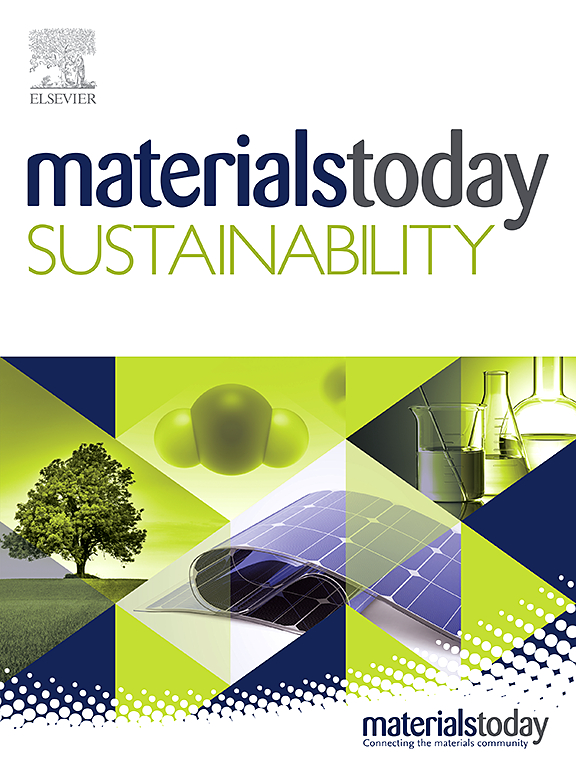Multifunctional polythiophene-based composites for environmental remediation and energy storage: A critical review
IF 7.9
3区 材料科学
Q1 GREEN & SUSTAINABLE SCIENCE & TECHNOLOGY
引用次数: 0
Abstract
Polythiophene (PTh), a conductive polymer with remarkable electrochemical stability and tunable electronic properties, has gained significant attention in the development of sustainable environmental and energy solutions. This review comprehensively explores the synthesis strategies, structural modifications, and functionalization techniques of PTh and its composites, emphasizing their role in wastewater treatment, gas sensing, and energy storage applications. The incorporation of nanomaterials, metal oxides, and carbon-based structures into PTh matrices enhances its conductivity, selectivity, and stability, making it a promising candidate for advanced technological applications. In wastewater treatment, PTh-based composites exhibit efficient adsorption and photocatalytic degradation of organic pollutants and heavy metals. Their application in gas sensing leverages their high sensitivity, rapid response, and selectivity toward hazardous gases, crucial for environmental monitoring. Additionally, PTh composites have demonstrated excellent charge storage capabilities, cycle stability, and high capacitance, making them viable materials for supercapacitors and next-generation batteries. This review critically assesses the challenges associated with PTh-based materials, including structural degradation, scalability, and real-world implementation, while highlighting emerging strategies for performance optimization. By providing an in-depth analysis of the recent advancements and future directions, this study seeks to connect foundational research with real-world applications, providing critical insights into how PTh composites contribute to sustainable solutions for environmental and energy challenges.

多功能聚噻吩基复合材料用于环境修复和储能:综述
聚噻吩(PTh)是一种具有优异的电化学稳定性和可调电子性能的导电聚合物,在可持续环境和能源解决方案的开发中受到了广泛关注。本文综述了PTh及其复合材料的合成策略、结构修饰和功能化技术,重点介绍了PTh及其复合材料在废水处理、气体传感和储能等方面的应用。纳米材料、金属氧化物和碳基结构在PTh基体中的掺入增强了其导电性、选择性和稳定性,使其成为先进技术应用的有前途的候选者。在废水处理中,pth基复合材料对有机污染物和重金属表现出高效的吸附和光催化降解。它们在气体传感中的应用利用了它们的高灵敏度,快速响应和对有害气体的选择性,这对环境监测至关重要。此外,PTh复合材料具有出色的电荷存储能力,循环稳定性和高电容,使其成为超级电容器和下一代电池的可行材料。这篇综述批判性地评估了与pth基材料相关的挑战,包括结构退化、可扩展性和实际应用,同时强调了性能优化的新兴策略。通过对最新进展和未来方向的深入分析,本研究旨在将基础研究与实际应用联系起来,为PTh复合材料如何为环境和能源挑战的可持续解决方案做出贡献提供关键见解。
本文章由计算机程序翻译,如有差异,请以英文原文为准。
求助全文
约1分钟内获得全文
求助全文
来源期刊

Materials Today Sustainability
Multiple-
CiteScore
5.80
自引率
6.40%
发文量
174
审稿时长
32 days
期刊介绍:
Materials Today Sustainability is a multi-disciplinary journal covering all aspects of sustainability through materials science.
With a rapidly increasing population with growing demands, materials science has emerged as a critical discipline toward protecting of the environment and ensuring the long term survival of future generations.
 求助内容:
求助内容: 应助结果提醒方式:
应助结果提醒方式:


